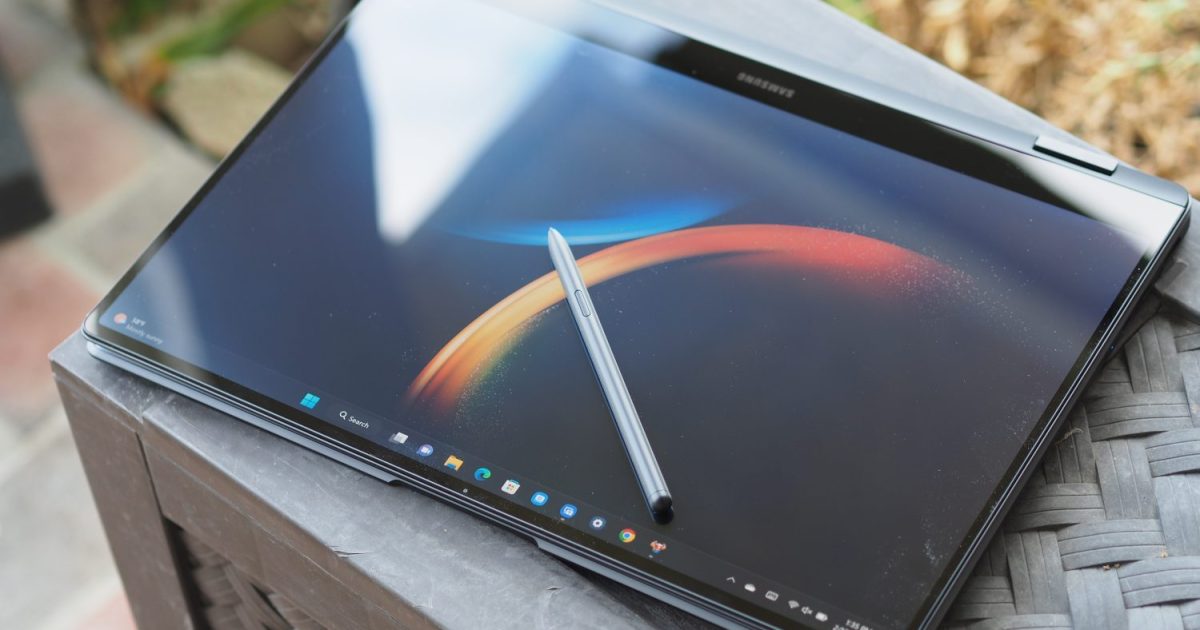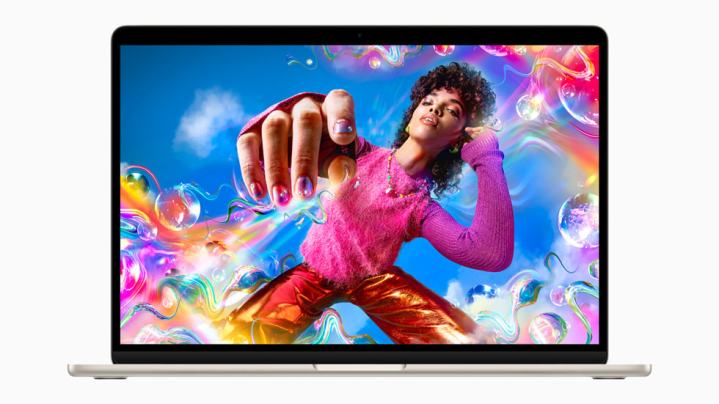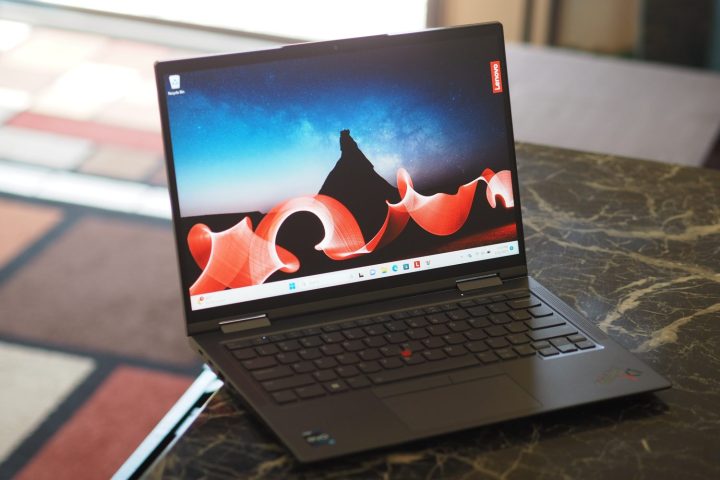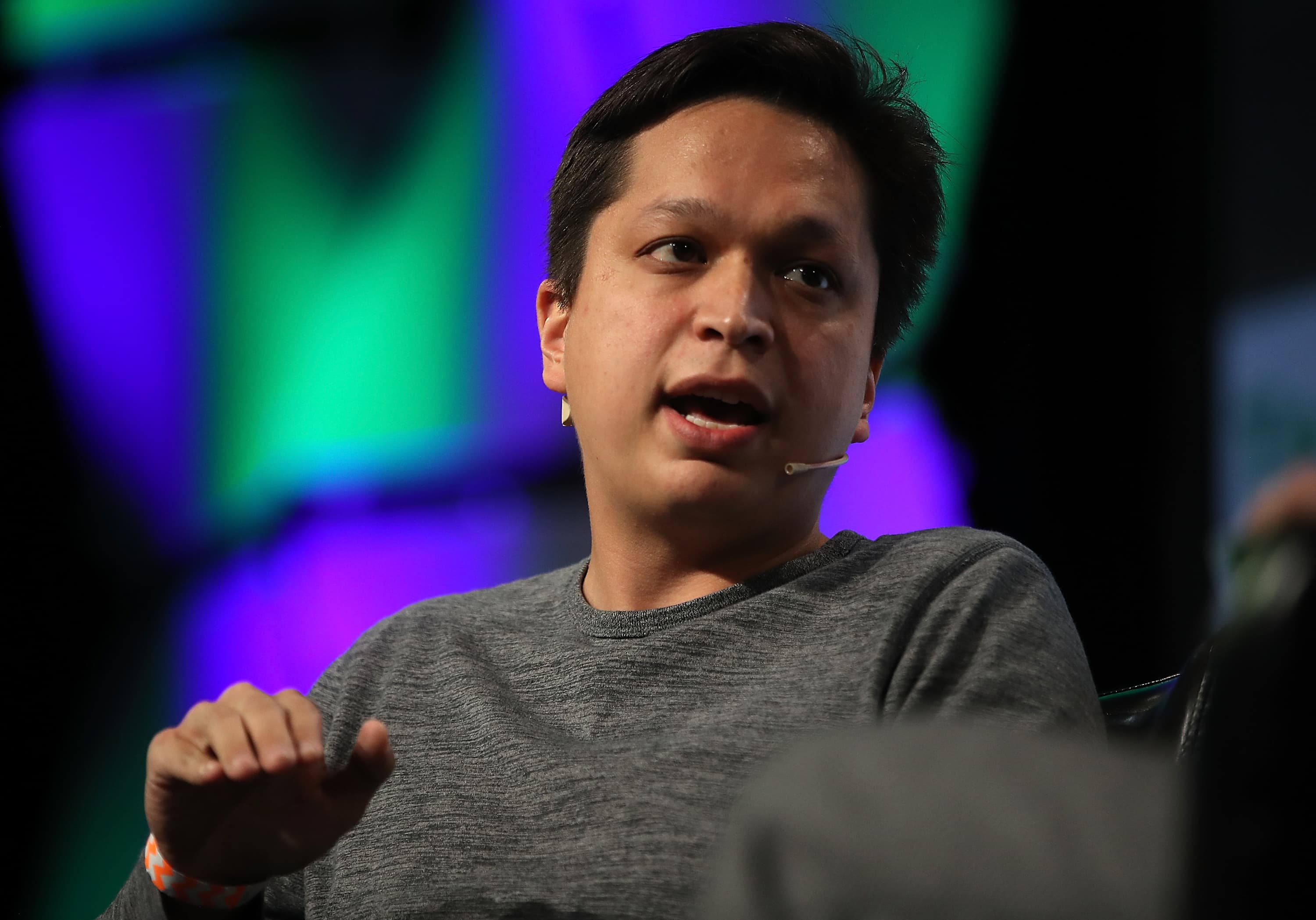The 5 best laptops for accountants in 2024
There are a lot of options out there for great accounting laptops, but we've gone out and found our favorites on the market to save you the trouble

Accountants tend to have a lot on their shoulders, especially as a lot of folks can rely on them for financial health, which is very important in today’s world where the economy isn’t at its best. As such, it’s important to have the right tools for the job, and while there are a ton of great laptops out there that might work well for accounting, some will excel at it more than others. As such, we’ve gone out and picked our favorite laptops that can easily handle everything from large and heavy-duty spreadsheets to accounting software. Also, if you haven’t quite found what you’re looking for here, be sure to check out some of or other favorite laptop deals as well.
The Best Laptops for Accountants in 2024
Buy the if you want the best overall laptop for accountants Buy the if you want the best MacBook laptop for accountants Buy the if you want the best portable laptop for accountants Buy the if you want the best 14-inch laptop for accountants Buy the if you want the best budget laptop for accountantsSamsung Galaxy Book3 Pro 360
Best overall laptop for accountants
 Mark Coppock / Digital Trends
Mark Coppock / Digital Trends| Pros | Cons |
| Spectacular OLED display | Not faster than all 12th-gen Intel machines |
| Solid build quality | Expensive at list price |
| Very thin and light |
One of the great things about Samsung is that it has created a similar sort of ecosystem as Apple, so if you already have other Samsung devices, adding the Samsung Galaxy Book3 Pro 360 is a good way to add some extra synergy. If not, it’s still an excellent laptop for accounting; with its thin and sleek looks, it is a bit on the pricey side, but it’s well worth every penny. For example, being able to turn into a 2-in-1 means that you can use it like a tablet, which is great if you’re giving a presentation or are on the move; and the the lower 3.66 pounds of weight means it won’t be too heavy to hold.
When it comes to performance, you’ll be happy to know that the Book3 Pro 360 comes with a 13th Gen Evo Core i7, which is an upper mid-range CPU that will easily handle everything from Excel to QuickBooks. That said, it isn’t faster than the older 12th-gen machines, but that’s not a sticking point given that they’re also pretty fast, so either way you’re getting a lot of performance. Similarly, the 16GB of DDR5 RAM might not be a lot, especially if you tend to work with large databases, but it should work for most folks.
Luckily, you do get a substantial 1TB SSD, so it will load things fast, and you’ll have a lot of space. It’s also worth mentioning that while it doesn’t materially impact accounting, the OLED screen is rather gorgeous, so it’s much more enjoyable to sit and look at for long periods. It also has all the modern connectivity trims you’d expect, from Bluetooth to Wi-Fi 6, and even two thunderbolt ports for connecting extra displays, which can certainly come in handy if you’re the type of person who needs multiple-screen workflow.
| Screen Size |
16-inches |
| Processor | Intel 13th Gen Evo Core i7-1360P |
| RAM | 16 GB DDR5 |
| Storage | 1TB SSD |
| Weight |
3.66 pounds |
M2 MacBook Air 15
Best MacBook laptop for accountants
 Apple / Apple
Apple / Apple| Pros | Cons |
| Long-lasting battery | Only supports one external display |
| Shockingly thin | |
| Excellent speakers |
Apple makes some of the best laptops on the market, so it’s natural that we’d include one in this list, although picking one can be a hard choice given that MacBooks can get quite expensive. That said, the 15-inch MacBook Air is the way to go when it comes to Apple laptops for accounting, especially since it serves as a middle ground between the smaller 13-inch MacBook Air and the exceptionally high-priced MacBook Pro. While it would have been nice to have a larger screen, the 15-inch one isn’t too bad and is about the size of your average laptop anyway, so it’s not an issue.
Of course, MacBooks have pretty excellent performance, and the M2 Chip that comes with this configuration is one of the best, only beating it out by the M2 Max and M3 versions of Apple’s chips. As such, it will handle most apps you throw at it without issue, especially since accounting apps aren’t as heavy to run as the creative apps Apple usually designs the MacBook for. That said, it’s important to keep in mind that not all applications are available across operating systems, so if you’ve been using Windows, be sure to check if your preferred apps are available on MacOS, too.
Moving on to RAM, Apple is known to be a bit stingy when it comes to giving you a lot, with it usually being locked behind higher and higher prices. Even so, the 16GB of RAM in our configuration is pretty solid, so even though you’ll be paying a little bit extra, it’s worth it so you can get a smoother overall experience. Also, the screen is really excellent as you would find with the Galaxy Book3 Pro 360, so you won’t feel terrible sitting in front of the screen for a long time. Also, the MacBook Air 15 has an excellent battery, which should last you up to 18 hours on a light load, although when you’re using it heavily, it won’t last as long.
| Screen Size |
15-inches |
| Processor | M2 Chip |
| RAM | 16 GB DDR5 |
| Storage | 512 GB |
| Weight |
3.3 pounds |
LG Gram 17
Best portable laptop for accountants
 Mark Coppock/Digital Trends / Mark Coppock/Digital Trends
Mark Coppock/Digital Trends / Mark Coppock/Digital Trends| Pros | Cons |
| Exceptionally light | Feels a little flimsy |
| Excellent display | Expensive |
| Very good keyboard and touchpad |
If you’re constantly on the go and don’t want to be lugging around a massive laptop, then we think the LG Gram 17 is probably one of the best lightweight laptops you can find on the market. In fact, at just 2.64 pounds it’s even lighter than the Galaxy Book3 Pro 360, which itself is already quite thin. Even better, it still manages to come with a massive 17-inch screen running a 2560 x 1600 resolution, so you get a ton of screen real estate and you can make the UI bigger so it isn’t as taxing to the eyes if you want.
In terms of performance, the Gram 17 is very much on par with a lot of other laptops on the list. For example, it comes with an Intel Core i7 Evo that’s a great upper-end CPU that should handle all your productivity apps just fine without issue. Also, the 16GB of DDR5 RAM means you’re going to have a smooth overall experience, assuming you aren’t using absolutely massive databases. Even if you do need a bit more RAM, you could always grab the , and while it is $300 more expensive, it also comes with an expanded 2TB of storage rather than the 1TB you get with our configuration.
Of course, the Gram 17 does have some downsides, which are primarily due to how thin it is, such as the fact that the overall build is flexible and can feel a bit flimsy, although it has gone passed MIL-STD-810G military testing, so it’s not going to be easily damaged. It’s also quite expensive for what you’re getting, at least at MSRP, so you should try to find it or one of its variants on sale if you can. Ironically, even though it’s so thin it has a pretty good battery, and you’ll get a lot of hours out of it that’s roughly comparable to the Book3 Pro 360 or the MacBook Air 15.
| Screen Size |
17-inches |
| Processor | Intel Core i7 Evo |
| RAM | 16 GB DDR5 |
| Storage | 1 TB |
| Weight |
2.64 pounds |
Lenovo ThinkPad X1 Yoga
Best 14-inch laptop for accountants
 Mark Coppock/Digital Trends / Digital Trends
Mark Coppock/Digital Trends / Digital Trends| Pros | Cons |
| Solid productivity performance | Expensive |
| Above-average battery life | Touchpad is a little small |
| Strong security and privacy features |
Of course, not everybody wants a big and massive screen, even on a thin and light laptop, so if you’re looking for something smaller, this ThinkPad X1 Yoga is a pretty great alternative. It’s also worth noting that it’s a great option if you want something with an added layer of security since it comes with a fingerprint reader. As such, if you work on a lot of sensitive stuff that requires that level of authentication, the X1 Yoga can satisfy those needs easily. We also appreciate the overall robust build, meaning you shouldn’t worry about sticking it in a bag and carrying it around with you everywhere.
In terms of performance, you’ll be happy to know that, even though it’s smaller, it still has excellent performance on par with other laptops on this list and comes with an Intel Core i7-1280P vPro. That’s a 12th-gen Intel i7 chip and on the upper end in terms of what it can handle, so you should be absolutely fine running all your apps. More impressively, it comes with a whopping 32GB of DDR5 RAM, making it an excellent option for those who need the extra RAM performance for dealing with larger files.
That said, it does have some issues, starting with the fact that it only has 512GB of storage, which isn’t a ton, so may want to supplement it with one of these external hard drive deals to get a bit more out of it. Also, another big downside is that the touchpad is pretty small, and it will be hard to use, meaning you’ll likely have to carry around a mouse to make life a bit easier. That said, the screen is touch-enabled, so you can use it that way, and the smaller size means it’s perfect for hooking up to a projector or larger screen if you’re constantly on the go and giving presentations.
| Screen Size |
15-inches |
| Processor | Intel Core i7-1280P vPro |
| RAM | 32GB DDR5 |
| Storage | 512 GB |
| Weight |
3.04 pounds |
Dell Inspiron 15
Best budget laptop for accountants
 Mark Coppock / Digital Trends
Mark Coppock / Digital Trends| Pros | Cons |
| Solid productivity performance | Screen color accuracy is off |
| Good keyboard and touchpad | No display option for creators |
| Attractive price |
Of course, you don’t need to spend over a thousand dollars to get yourself a good laptop for accounting, and if you’re on a tight budget, then this Dell Inspiron 15 is the way to go. Of course, it’s not as sleek and fancy as some of the other options here, but it does have a $600 MSRP price tag, and it usually goes on sale in some configuration close to the one we’ve picked, so we’re happy to suggest this as a good budget option. That said, it’s also worth keeping an eye out for the slightly larger and more capable Inspiron 16 Plus, which also goes on sale for a pretty good discount.
Luckily, even for a budget laptop, it has some excellent performance, running a similar Intel Core i7-1255U CPU, which sits at the higher end of the scale, so you’ll have no problem running any accounting apps on this. That said, you may want to upgrade to the Windows 11 Pro version of the software for a better overall experience, even though it will cost you an extra $100 or so in the configurator if you don’t have your own copy. Luckily, you still get 16GB of RAM, and even though it’s the older DDR4 standard, that’s still pretty fast, and for the budget price, we can’t complain.
Otherwise, you do get a smaller 512GB SSD to work with, and if you need more you can upgrade it to 1TB in the configurator, although it will also add around $100 or $50, depending on which other upgrades you pick. The display is also only FHD and doesn’t have really excellent colors, although that should only really affect you if you’re doing creative work as well. That said, the screen is touch-enabled, which is great if you want to control it that way, and it also runs a 120Hz refresh rate, which will make things feel less jittery and more smooth, sort of like how you would find on a flagship phone, which is why it’s so nice to see that on a budget laptop.
| Screen Size |
15-inches |
| Processor | Intel Core i7-1255U |
| RAM | 16 GB DDR4 |
| Storage | 512 GB |
| Weight |
3.65 pounds |
How We Chose These Laptops for Accountants
Processor
When it comes to accounting software, one of the most important things they rely on is processing power, especially since you may sometimes have to run two or more at the same time. As such, all of our picks are focused on prioritizing a higher-end CPU, either an Intel Core i7 or an AMD Ryzen 7 configuration, since both of these are mid-to-high-end CPUs that should easily handle the sort of applications you’re likely to run. The only option that deviates from this is the M2 Chip of the MacBook Air 15, although its performance is roughly equivalent to an i7 or R7, so performance is roughly the same, even if you go for the MacBook.
While you could, in theory, grab one of the higher-end CPUs, like the Intel i9 or the AMD R9, they probably won’t give you that much performance unless you specifically run simulations that heavily rely on CPU, which you likely won’t be dealing with. On the other end of the scale, something like a mid-range Intel i5 or AMD R5 could potentially be good enough to run your apps, and if you’re trying to save a little bit of cash, that may be an option for any of our picks above that has a configurator. Even so, we think the i7 or R7 middle-ground is the way to go.
RAM
Another thing that accounting apps tend to rely on is RAM, especially if you’re working with large databases that tend to do a number on RAM. So, even though 8GB would usually be the number we’d suggest as a minimum, if you want to grab something that’s going to last, then going for 16GB of RAM is the minimum, and that’s what we’ve focused on. In fact, we’ve even gone and found an option or two that goes up to 32GB since that will definitely be a lot more helpful, albeit more expensive.
That said, don’t invest in higher-end RAM with a configurator unless you know for sure that you need it. 16GB of RAM should be more than enough for a small or potentially even a medium-sized business, so it’s not worth spending extra money if you don’t have to. The only exception is if you’re truly opening several applications and dozens of browser tabs at the same time, in which case more RAM will always be better.
Screen
While the screen size of a laptop doesn’t materially change the performance of things like the accounting apps you’re going to deal with, we certainly know how difficult it can be staring at a small and bad screen for several hours at a time. As such, we generally did our best to not only laptops that have larger screens in the 15-inch to 17-inch range but also laptops that had good screens that ran either OLED or higher resolutions to make it less annoying to spend hours looking at a screen.
The only real exception is the smaller 14-inch option, which was made for folks who are more interested in something small and portable, which is a valid need if you end up hooking up the laptop to a projector or a secondary screen most of the time.
Battery Life
Battery life is a bit more complicated because everybody wants a battery that lasts longer, but the heavier the use is on the laptop, the less battery life it will have. That makes it difficult to say exactly how long a batter will last, but we have done our best to make picks that should see you get between 8-10 hours of use before needing a charge, even when using it relatively heavily. Luckily, accounting software isn’t as power-hungry as something like a game or graphical simulation, so assuming you’re mostly going to stick to that and more general day-to-day tasks like browsing and watching films, most of our picks should last you quite a while.
This article is managed and created separately from the Digital Trends Editorial team.

 Lynk
Lynk 
































